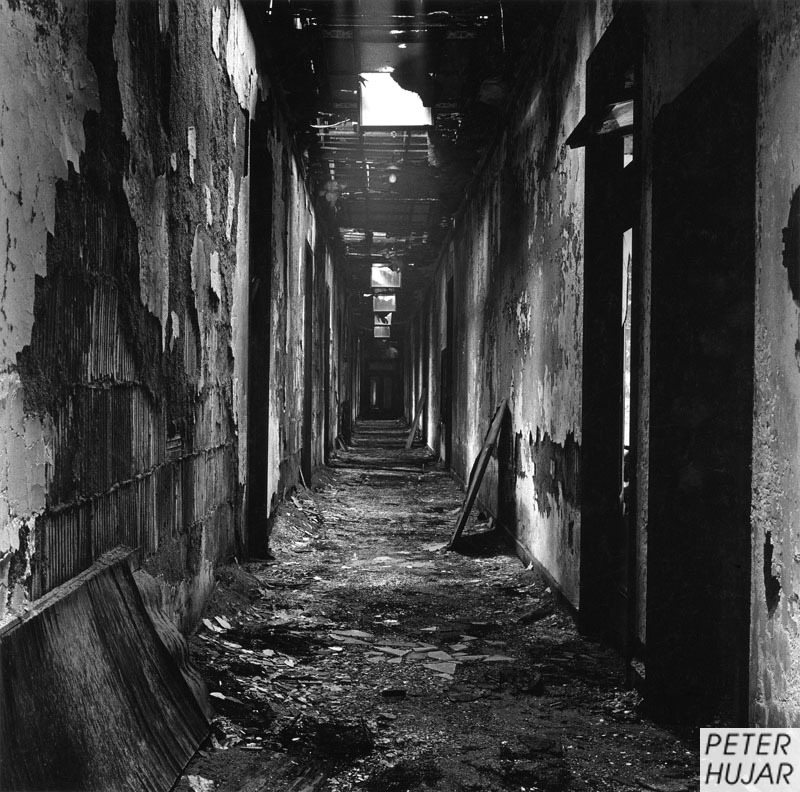Morgan Library’s Peter Hujar retrospective: the way of all flesh
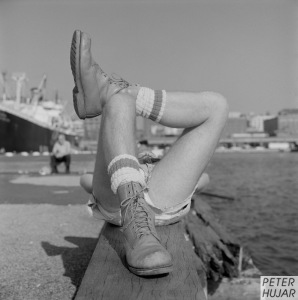
by Ariella Budick, Financial Times
https://www.ft.com/content/34754150-0a6c-11e8-bacb-2958fde95e5e
Morgan Library’s Peter Hujar retrospective: the way of all flesh

by Ariella Budick, Financial Times
https://www.ft.com/content/34754150-0a6c-11e8-bacb-2958fde95e5e
He Made Them Glow: A Maverick’s Portraits Live On
Review by Holland Cotter in the New York Times
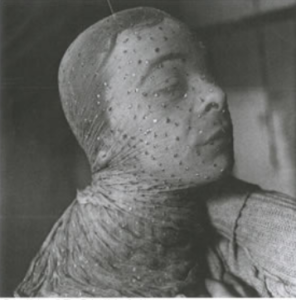
https://www.nytimes.com/2018/02/08/arts/design/peter-hujar-morgan-library-and-museum-review
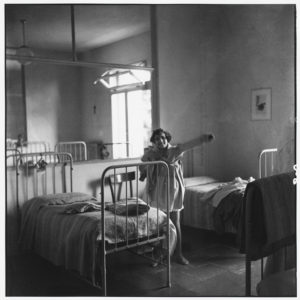
http://www.shotnlust.com/Peter-Hujar
GREER LANKTON
Years before the Lower East Side was home to surf shops and vegan cupcakes, AIDS and drugs ravaged the community, and galleries had names like Civilian Warfare. It was there (among other venues) that Lankton, who died in 1996, exhibited her remarkable doll sculptures. Although best known to many as a muse of Nan Goldin’s, Lankton was a superb artist in her own right, capturing the glam and the pain of the artistic life in paint, paper, and wire. In her case, the pain was both psychic and physical; born Greg, in Michigan, Lankton had gender reassignment surgery in her early twenties, an operation she detailed in watercolors seen here. As compelling as the figures themselves are (from a life-size Diana Vreeland to a bust of Candy Darling), it’s the memorabilia and the photographs of Lankton (by Goldin, Peter Hujar, and others) that will capture your heart. Through Dec. 21.
November 2 – December 21
Participant, Inc.
http://www.newyorker.com/goings-on-about-town/art/greer-lankton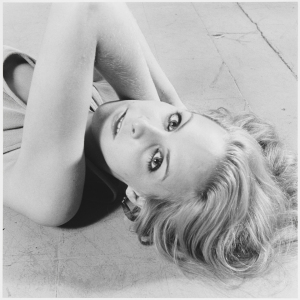
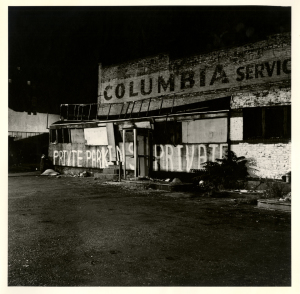
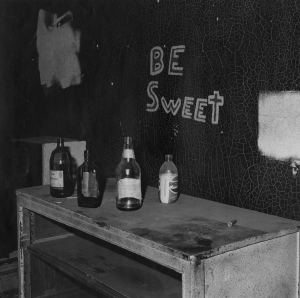
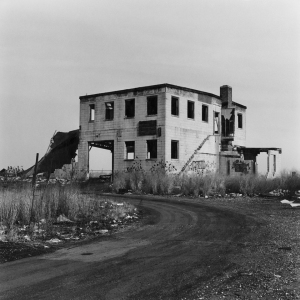
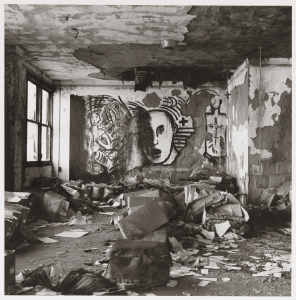
Moved by someone’s suggestion that she resembles Susan Sontag, I’ve been reading Rebecca Solnit: A Field Guide to Getting Lost. Solnit’s similarity to Sontag escapes me; if you are looking for her role model in the matriarchy of modern lit, Annie Dillard is vastly more convincing. And could there be two sensibilities less alike than Dillard and Sontag?
Anyway, Solnit is neither Dillard nor Sontag but herself. In A Field Guide to Being Lost she discusses Peter Hujar—especially the pictures he made in urban ruins during the era of AIDS. Her evocation may be the first time Hujar’s mute meditation on that dark time has broken into the discourse.
This era came rushing back to me a few years ago when I walked into a New York gallery full of the photographs of Peter Hujar, who died of AIDS in 1987. I had been looking at contemporary art in the several galleries that preceded this momentous entrance, art that was sleek, shiny, clever… art that was in some ways about the smooth surface of the new city that had replaced the cityscape that so moved me in Hujar’s pictures. In Hujar’s saturated black and white prints of animals, outcastes, eccentrics and ruinous places, the world was rough in every sense. Its surfaces were porous, decrepit, sensuous, full of age and what seemed an ability to absorb…light, meaning, emotion…
The time was about this kind of place, one that was ruinous, bleak, but somehow still imbued with a romantic outlaw sense of possibility, of freedom, even the freedom to be idealistic in the bitter vein of the Sex Pistols’ “No Future.”
– Stephen Koch, Director, Peter Hujar Archive
Currently, the Modern Institute Osborne Street in Glasgow is exhibiting If you don’t like this book you don’t like me, a collection of notebooks by Paul Thek that provide contextual information about the artist’s life and works. Included in this exhibition are also photographic collaborations with Peter Hujar that demonstrate the importance of their relationship throughout both artists’ careers.
Here in New York at the end of 2011, the exhibition Influential Friends of Peter Hujar, presented at John McWhinnie @ Glenn Horowitz Bookseller, explored this same friendship as well as that between Peter Hujar and David Wojnarowicz. Archival materials from Influental Friends help reveal both the significant role these artists played in shaping the cultural downtown scene in New York during the 1970s and 80s, as well as the depth of emotional connections between them. Included in this show were a series of postcards sent by Wojnarowicz to Hujar from all over the world towards the end of Hujar’s life. As the late John McWhinnie writes in some of the text accompanying this brilliant exhibition, “[Wojnarowicz’s postcards to Hujar] detail both the mundane and extraordinary of his travel experiences, but also provide a glimpse into the closeness of their bond.” The last of Wojnarowicz’s postcards was written just months before Hujar’s death in November of 1987.
Here are a few selections from this collection of touching notes, some with personal illustrations by Wojnarowciz. Highlights include, “P.S. I GOT POISON IVY + FOUND A MUMMIFIED SHARK,” and Wojnarowicz’s watercolor of a floating nose on the back of the reproduction of Man Ray’s At the Hour of the Observatory.
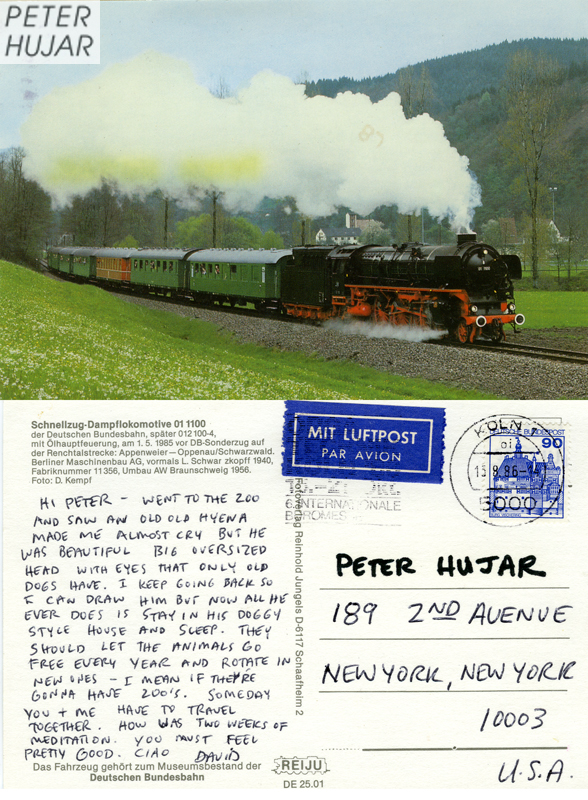
In the 1970s and early 1980s, the New York Piers were the site of much activity among artists and an emerging gay culture. At the piers, gay men would congregate, sunbathe naked, and engage in sexual encounters. Significant New York based artists explored this dynamic site, inspired by the mix of an emerging gay culture and the ruins of dilapidated New York structures. Peter Hujar, of course, was there and his work is included in the “Piers” exhibition now on view at the Leslie-Lohman Museum of Gay and Lesbian Art.
Here a few more photographs by Hujar taken at the New York Piers during the 1970s and 80s:
